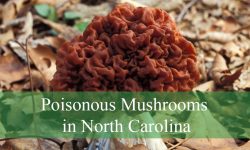Ground cover plants with purple flowers are a wonderful addition to any garden, offering both beauty and functionality. These low-growing plants are perfect for filling in empty spaces, suppressing weeds, and adding vibrant color to your landscape. With their diverse range of purple shades, from soft lavender to deep violet, they create a striking visual impact and attract pollinators like bees and butterflies.
In this article, we will explore 50 ground cover plants with purple flowers that are not only visually stunning but also easy to maintain. Ground cover plants with purple flowers are perfect for brightening up your garden’s shade areas or spreading across sunny spots. You’ll find the perfect option here. These plants are ideal for creating a lush, colorful carpet that enhances the overall aesthetic of your outdoor space.
Ground cover plants with purple flowers can thrive in various climates and soil types, making them suitable for many different garden settings. From creeping perennials to sprawling vines, these plants offer versatile solutions for landscaping challenges. In the following sections, you’ll discover beautiful purple-flowered ground covers that will elevate your garden’s charm while providing lasting beauty year after year.
Common Ground Cover Plants with Purple Flowers
Creeping Phlox (Phlox subulata)

Creeping Phlox is a vibrant, low-growing perennial that forms a colorful carpet of lavender to violet blooms during the spring. It’s known for its dense mat-forming habit, spreading beautifully across slopes, retaining walls, or rocky terrain. The plant produces needle-like evergreen foliage that remains attractive year-round, even after flowering ends.
This plant thrives in USDA hardiness zones 3 through 9 and prefers full sun exposure. Reaching a modest height of 4 to 6 inches, Creeping Phlox is ideal for rock gardens and borders. It blooms profusely in spring, often transforming the landscape into a striking sea of purple.
Care for Creeping Phlox is relatively simple. Ensure well-drained soil and avoid overly humid conditions. Water during prolonged dry spells, especially in its first year, and shear back the blooms after flowering to encourage a tidy appearance and more compact growth.
Bugleweed (Ajuga reptans)
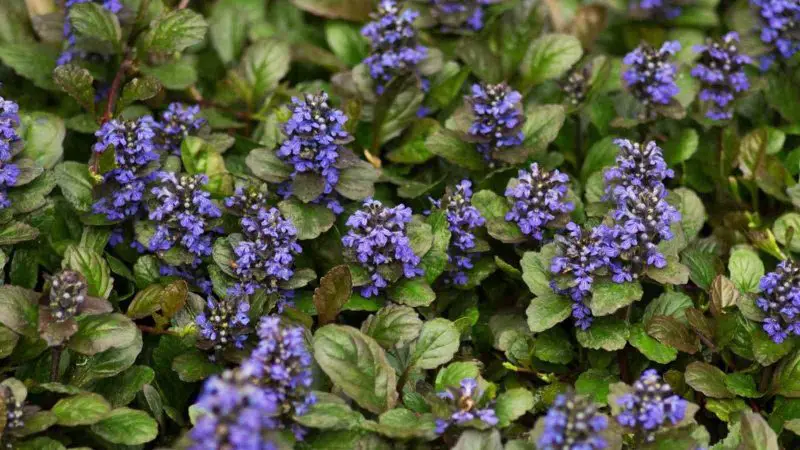
Bugleweed is a versatile and fast-spreading ground cover with attractive spikes of purple-blue flowers that rise above glossy, dark green or bronze foliage. Its colorful blooms appear in spring and may continue into early summer, creating a stunning contrast with the leaves.
Hardy in USDA zones 3 through 10, Bugleweed grows 4 to 8 inches tall and thrives in full sun to partial shade. It adapts well to various soil types and is an excellent choice for controlling weeds thanks to its dense, mat-like spread. It’s commonly used around trees, in shady borders, and even in containers.
For best results, provide moist, well-drained soil and avoid planting in areas with poor air circulation, which can cause crown rot. Bugleweed requires little maintenance but may need occasional thinning to prevent overcrowding. It’s both decorative and practical in many landscaping scenarios.
Creeping Thyme (Thymus serpyllum)

Creeping Thyme is a fragrant and edible ground cover known for its tiny purple blooms that appear in summer. It produces a soft mat of aromatic foliage that’s ideal for planting between stepping stones, along walkways, or in sunny garden beds. When walked upon, it releases a pleasant herbal scent.
Suited for USDA hardiness zones 4 through 9, this plant remains low to the ground, growing just 2 to 3 inches tall. It performs best in full sun and well-drained soil, showing impressive drought tolerance once established. Its summer-blooming purple flowers attract bees and other pollinators.
Creeping Thyme is a low-maintenance option that requires little watering and no mowing. It benefits from occasional trimming after flowering to keep it neat and to encourage fresh growth. It’s also resistant to deer and tolerates moderate foot traffic, making it a charming and practical ground cover.
Periwinkle (Vinca minor)

Periwinkle is a hardy evergreen ground cover that boasts delicate lavender-blue flowers from spring into early summer. Its trailing stems root wherever they touch the soil, forming a thick, weed-suppressing carpet of glossy green leaves that remain attractive year-round.
This plant is ideal for USDA zones 4 through 9 and adapts well to full sun, partial shade, or full shade. Growing 4 to 6 inches tall, Periwinkle excels at erosion control on slopes and in shaded areas where other plants struggle. Its bloom period may extend with cooler temperatures and filtered sunlight.
Periwinkle is very low-maintenance and drought-tolerant once established. It prefers well-drained soils and should be spaced properly to allow for air circulation and reduce the risk of fungal disease. It’s a great solution for ground coverage under trees or in woodland gardens.
Spotted Deadnettle (Lamium maculatum)

Spotted Deadnettle offers a lovely mix of ornamental foliage and charming purple blooms from spring through fall. Its heart-shaped, silver-marked leaves brighten shady spaces, and the plant provides long-lasting seasonal interest with frequent bursts of color.
Hardy in USDA zones 3 through 8, this plant grows 6 to 10 inches tall and thrives in partial to full shade. It adapts well to most garden soils and is especially valuable in areas with low sunlight, making it a favorite for woodland settings, under shrubs, or along shaded borders.
To care for Spotted Deadnettle, provide moist, well-drained soil and trim it back in midsummer if it becomes leggy. It spreads by rooting stems and is generally resistant to deer and rabbits. Its tolerance to shade and long blooming period make it a reliable and attractive ground cover.
Creeping Mazus (Mazus reptans)
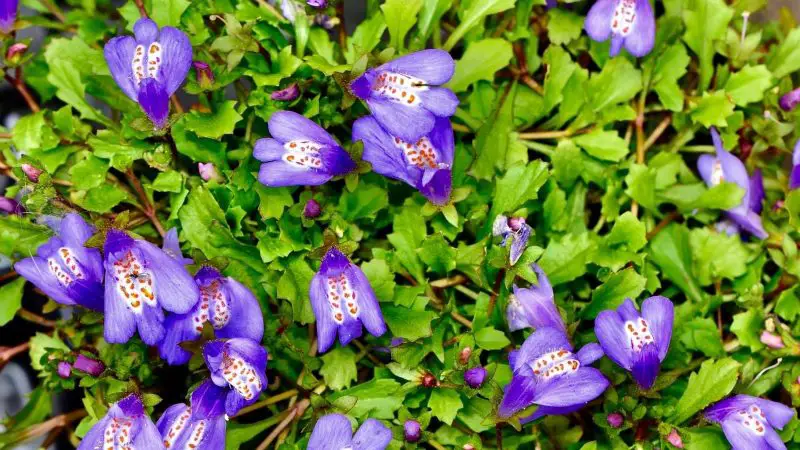
Creeping Mazus is a charming ground cover that creates a dense mat of green foliage adorned with delicate purple-blue flowers from late spring to early summer. Its tiny blooms and compact size make it an excellent choice for borders, between pavers, or around water features.
This plant grows in USDA zones 5 through 8 and prefers full sun to partial shade. It reaches a height of only about 2 inches, allowing it to fill in garden gaps without overshadowing neighboring plants. The flowers add a soft, colorful touch while the plant maintains its coverage throughout the growing season.
Creeping Mazus is easy to maintain and tolerates light foot traffic, making it great for walkways and patios. It prefers moist, well-drained soils and benefits from occasional watering during dry periods. It’s a fast spreader but stays low and neat, offering both beauty and practicality in compact garden areas.
Lithodora (Lithodora diffusa)
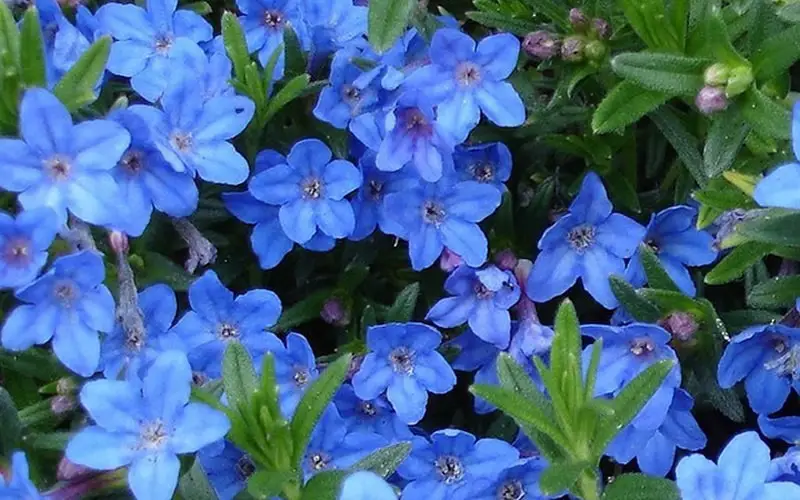
Lithodora is an evergreen ground cover that thrives in full sun, producing clusters of stunning deep blue-purple flowers during late spring to summer. It forms a dense mat of foliage that remains vibrant throughout the year, making it a great addition to gardens that require a splash of color. Its compact growth habit and striking blooms make it an ideal choice for rock gardens, slopes, or borders.
This plant is hardy in USDA zones 6 through 8 and reaches a modest height of 6 inches, perfect for low-growing ground cover. Lithodora prefers well-drained soil and requires minimal maintenance. It performs best when planted in sunny locations with excellent drainage to prevent root rot.
To care for Lithodora, water it during dry spells but avoid overwatering. It’s a relatively drought-tolerant plant once established but will appreciate regular watering in extreme heat. Trim the plant back after flowering to maintain its compact shape and encourage healthy growth for the next season.
Dalmatian Bellflower (Campanula portenschlagiana)
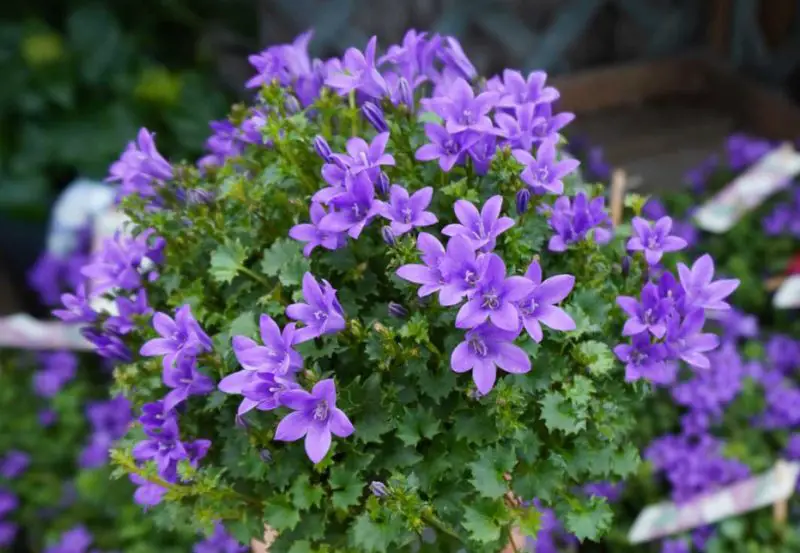
Dalmatian Bellflower is a charming perennial known for its vibrant purple, bell-shaped flowers that bloom from late spring into early summer. Its trailing growth habit makes it perfect for rock gardens, hanging baskets, or cascading over edges. The plant’s rich purple flowers create a striking contrast against its lush green foliage, which remains attractive even after blooming.
This perennial thrives in USDA zones 3 through 8 and grows between 6 to 10 inches in height. It performs well in full sun to partial shade and prefers well-drained soil. Dalmatian Bellflower is a great option for gardeners looking for a plant that will naturally fill spaces and provide long-lasting color throughout the blooming period.
Dalmatian Bellflower requires minimal care but should be watered regularly, especially during dry spells. Deadheading spent flowers can promote additional blooms, though the plant is generally self-sufficient in its growth. It’s a versatile and resilient addition to garden beds, making it suitable for a variety of landscaping designs.
Cranesbill (Geranium spp.)

Cranesbill, or hardy geranium, is a group of versatile ground covers known for their beautiful purple to magenta blooms that appear from late spring to summer. These plants are highly adaptable, thriving in a wide range of growing conditions. Whether planted in full sun or partial shade, Cranesbill brings color and texture to garden beds, borders, and containers.
Typically reaching heights of 6 to 12 inches, Cranesbill is hardy in USDA zones 4 through 8. It forms a low-growing, spreading mound of foliage, which is often accented by delicate flowers. Cranesbill is a great option for filling gaps in the garden or as a filler plant in mixed beds, where it can thrive alongside other perennials.
Caring for Cranesbill is simple; it prefers well-drained soil and moderate watering. This plant is drought-tolerant once established and will benefit from being trimmed back after blooming to encourage a neat appearance and a potential second flowering in the fall.
Purple Ice Plant (Delosperma cooperi)

Purple Ice Plant is a stunning succulent known for its vibrant purple daisy-like flowers that bloom from spring to fall. These flowers are a striking addition to sunny garden spots, and the plant’s fleshy, drought-tolerant foliage makes it an excellent choice for xeriscaping and hot, dry areas. The Ice Plant’s bright blooms and low-growing habit make it an attractive option for ground cover or as an accent in succulent gardens.
This plant thrives in USDA hardiness zones 5 through 10 and grows to a height of only 2 to 4 inches, making it ideal for filling in gaps or covering rocky terrain. Purple Ice Plant flourishes in full sun and well-drained, sandy or loamy soil, making it perfect for hot, sunny locations with minimal water needs.
To care for Purple Ice Plant, plant it in areas with excellent drainage to prevent root rot. While it’s highly drought-tolerant, it will still benefit from occasional watering during extreme heat. A light trim after blooming will help maintain its compact shape and promote a tidy appearance throughout the growing season.
Horned Pansy (Viola cornuta)
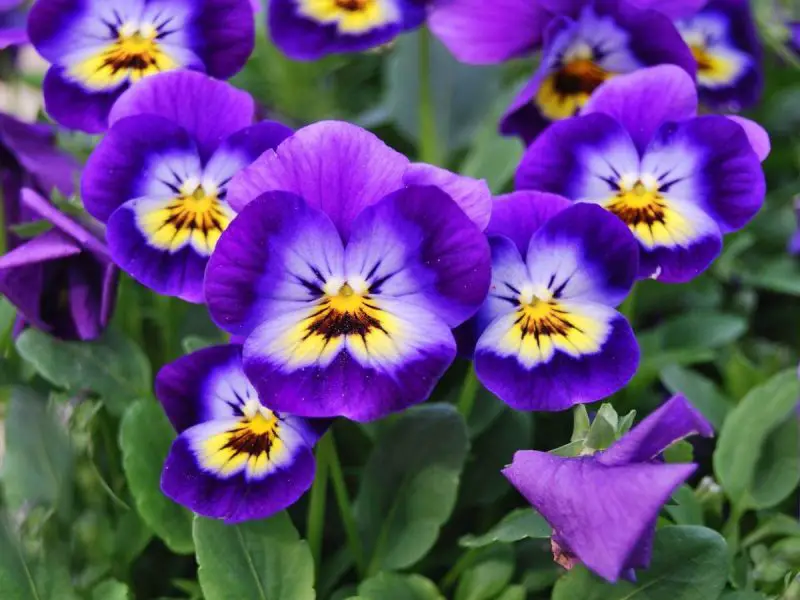
Horned Pansy is a fragrant perennial known for its small but striking flowers in shades of purple and blue. These flowers bloom from spring to fall, providing continuous color and fragrance in garden beds, containers, or hanging baskets. The compact nature of Horned Pansy, combined with its delightful blooms, makes it a popular choice for both sunny spots and areas with partial shade.
Hardy in USDA zones 6 through 11, Horned Pansy grows 6 to 8 inches tall, making it an excellent choice for edging, borders, or filling in gaps between larger plants. It thrives in full sun to partial shade, offering flexibility in its planting location. The plant’s bright, eye-catching blooms make it a great option for adding vibrant colors to your garden.
To care for Horned Pansy, ensure it’s planted in well-drained soil and water it regularly, especially during dry spells. It benefits from deadheading to prolong its blooming season, and occasional trimming will help maintain a bushy, attractive shape. Horned Pansy is also a great choice for attracting pollinators like bees and butterflies.
Creeping Lilyturf (Liriope spicata)
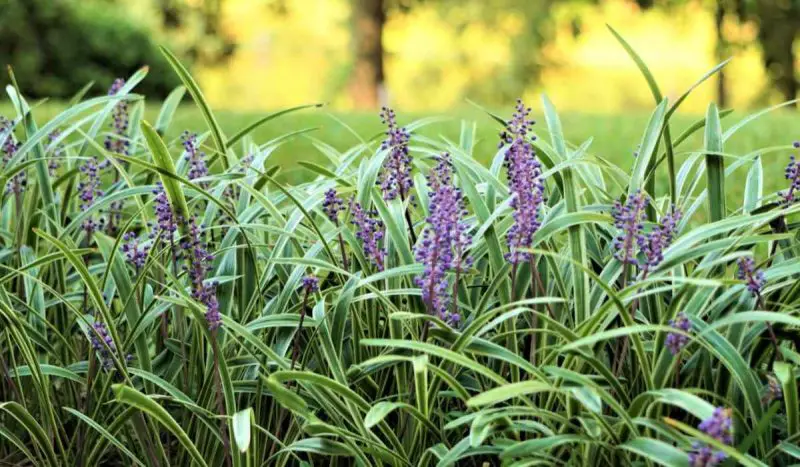
Creeping Lilyturf is a hardy, grass-like perennial that features beautiful purple flower spikes in late summer to fall. Its strappy green foliage forms a dense mat that can effectively suppress weeds and provide a backdrop for other plants in the garden. The plant’s vibrant flowers rise above the foliage, adding height and visual interest to garden beds or pathways.
This ground cover thrives in USDA zones 5 through 10, growing between 12 to 18 inches tall. It performs well in full sun to full shade, making it a versatile option for various garden conditions. Creeping Lilyturf is often used as a low-maintenance solution for areas where other plants may struggle.
Caring for Creeping Lilyturf is relatively easy. It’s drought-tolerant once established, but it benefits from occasional watering during dry periods. The plant is adaptable to a wide range of soils and requires minimal attention beyond occasional trimming to maintain a tidy appearance. Its ability to tolerate both sun and shade makes it a favorite for versatile garden applications.
Royal Candles (Veronica spicata)
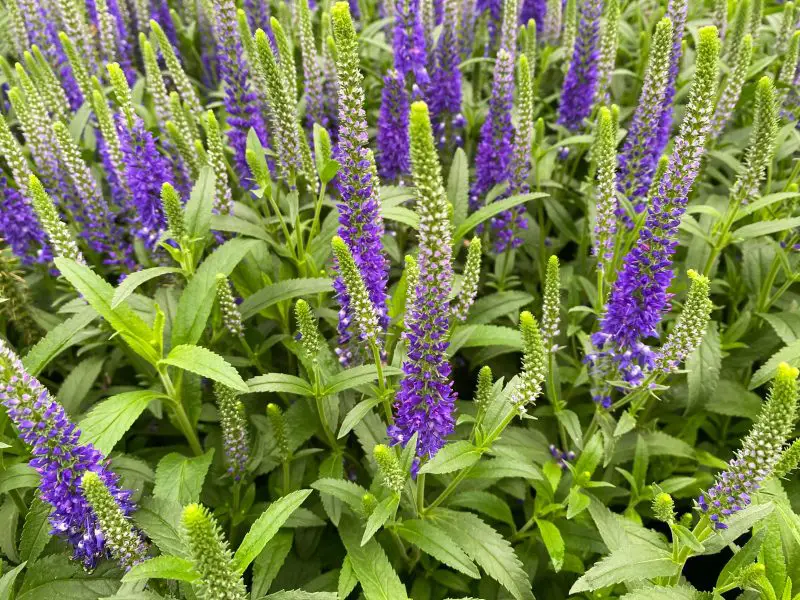
Royal Candles is a striking clumping perennial that features tall spikes of small purple flowers blooming throughout the summer. Its vibrant blooms are arranged in elongated spires, creating a vertical pop of color in the garden. The plant’s compact, bushy habit makes it an excellent choice for borders, mixed beds, and pollinator-friendly landscapes, as it attracts bees and butterflies.
This plant thrives in USDA zones 3 through 8 and grows between 12 to 18 inches in height. It prefers full sun and well-drained soil, making it an ideal addition to sunny garden beds or flower borders. The plant’s long-lasting bloom period and dense foliage make it an excellent choice for filling in gaps and adding texture to gardens.
Caring for Royal Candles is straightforward; ensure it is planted in well-drained soil, and water it during dry spells. Deadheading spent flowers will encourage continuous blooming, while regular division every few years will help maintain its vigor and shape. Its low-maintenance nature makes it an easy choice for gardeners seeking a beautiful, pollinator-friendly plant.
Wild Violet (Viola sororia)

Wild Violet is a charming perennial that thrives in partial shade, producing lovely purple-blue blooms over heart-shaped green leaves. It creates a beautiful carpet of color in shaded areas and is perfect for naturalizing under trees or along woodland edges. The plant’s ground-hugging growth habit and vibrant blooms make it an attractive addition to shaded garden spaces.
This perennial is hardy in USDA zones 3 through 9 and grows to a height of 6 to 10 inches. Wild Violet prefers well-drained, moist soil and is perfect for areas with dappled sunlight. Its heart-shaped leaves provide texture and interest even when not in bloom, making it a versatile ground cover.
To care for Wild Violet, ensure it has consistent moisture, especially during dry periods. It requires minimal maintenance and benefits from occasional division to maintain its health and vigor. Wild Violet also attracts pollinators like bees, adding both beauty and ecological value to the garden.
Alpine Aster (Aster alpinus)

Alpine Aster is a compact perennial that produces beautiful purple daisy-like flowers in late spring to summer. The plant’s cheerful blooms add a burst of color to rock gardens, alpine beds, or borders. Its low-growing habit and dense foliage make it an ideal choice for small garden spaces, where it can provide continuous color throughout its blooming period.
This plant is hardy in USDA zones 4 through 7 and grows to a height of 6 to 12 inches. It thrives in full sun and well-drained, slightly alkaline soil, making it perfect for rock gardens, where the soil tends to be lighter and well-drained. Alpine Aster’s compact size allows it to fit easily into garden corners or along pathways.
Caring for Alpine Aster involves planting it in a sunny spot with good drainage. Water it regularly but allow the soil to dry out between waterings to prevent root rot. Deadheading spent flowers will encourage a second round of blooms. The plant is generally low-maintenance, making it a great option for busy gardeners looking for easy care and long-lasting color.
Purple Rock Cress (Aubrieta deltoidea)
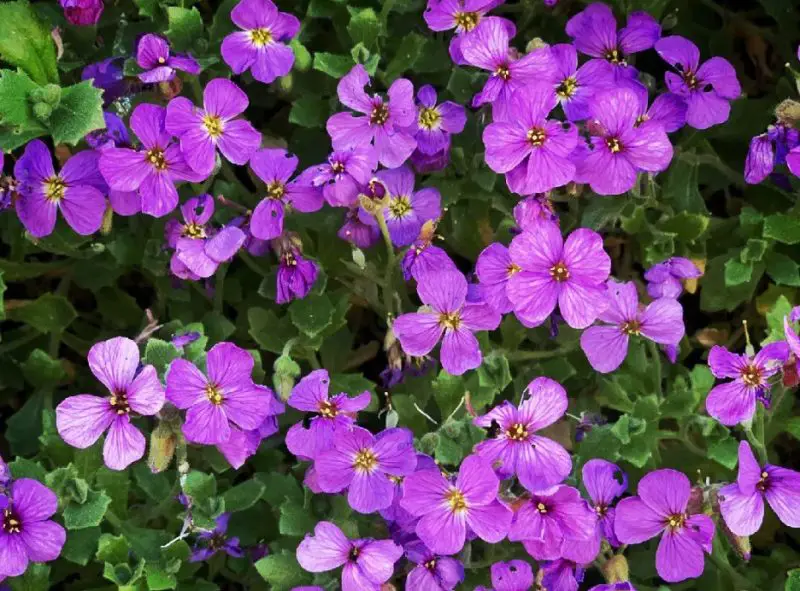
Purple Rock Cress is a low-growing perennial that forms a dense mat of vibrant purple flowers in early spring. Its striking blossoms provide a cheerful contrast against the plant’s green foliage, making it a popular choice for rock walls, slopes, and cascading down the edges of raised beds. Purple Rock Cress is a great way to add color and texture to any landscape.
This plant thrives in USDA zones 4 through 8 and grows to a height of only 4 to 6 inches, making it an ideal ground cover for sunny locations. It prefers well-drained, rocky, or sandy soil, and is perfect for areas with excellent drainage, such as rock gardens or along stone paths. The early spring blooms are a welcome sight after the winter months, brightening up the landscape.
Caring for Purple Rock Cress involves planting it in a sunny spot with well-drained soil. It is drought-tolerant once established but will benefit from occasional watering during dry spells. Trim the plant after flowering to maintain a neat appearance and encourage strong regrowth for the next season. Its low-growing habit and vibrant color make it a standout in any garden design.
Trailing Lobelia (Lobelia erinus)

Trailing Lobelia is a popular annual (in cooler zones) or perennial (in warmer climates) that produces masses of small purple flowers from spring to fall. This plant is perfect for containers, hanging baskets, or as a ground cover, with its cascading growth habit providing a continuous display of color. The vibrant purple flowers are eye-catching and create a lovely drape of color wherever it’s planted.
This plant is suitable for USDA zones 10 through 11 as a perennial and serves as an annual in cooler regions. It typically grows to a height of 4 to 6 inches, spreading over time to create a trailing effect. Trailing Lobelia thrives in full sun to partial shade, making it a versatile option for various garden settings.
To care for Trailing Lobelia, ensure it is planted in well-drained soil and water it regularly, especially during dry periods. The plant benefits from regular deadheading to promote continuous blooming. It’s an ideal choice for gardeners looking to add a splash of purple to their containers, hanging baskets, or window boxes.
Purple Heart (Tradescantia pallida)

Purple Heart is a striking ground cover plant known for its unique purple foliage and small pinkish-purple flowers that bloom in the summer. Its vibrant, eye-catching leaves are a standout feature in gardens, while the small flowers provide a subtle but beautiful accent. Purple Heart is perfect for adding color and texture to garden beds or as a low-maintenance, drought-tolerant ground cover.
This plant thrives in USDA zones 8 through 11 and grows between 6 to 12 inches tall. It performs best in full sun to partial shade and is especially well-suited for hot and dry conditions. Purple Heart’s heat tolerance and ability to thrive in a variety of soil types make it a great addition to xeriscaped gardens or areas with poor soil.
To care for Purple Heart, ensure it is planted in well-drained soil and water it during extended dry periods. Once established, it’s highly drought-tolerant. It benefits from occasional pruning to keep the plant looking tidy and to promote new growth. Its ability to withstand heat and dry conditions makes it a perfect choice for low-maintenance gardens.
Lamb’s Ear (Stachys byzantina)

Lamb’s Ear is a low-growing perennial that stands out for its soft, velvety silver foliage, making it an attractive addition to garden borders or ground covers. In early summer, it produces short spikes of purple flowers that contrast beautifully with the silvery leaves. This plant is ideal for creating texture and visual interest in landscapes, especially in areas with full sun.
This plant thrives in USDA zones 4 through 9 and grows to a height of 6 to 12 inches. Lamb’s Ear is drought-tolerant once established and prefers well-drained soil, making it a great choice for xeriscaping. Its soft, fuzzy leaves also make it deer-resistant, adding to its appeal for low-maintenance gardens.
To care for Lamb’s Ear, ensure it has good drainage, as it is prone to root rot in wet soils. Trim back the spent flower spikes after blooming to maintain a neat appearance. While it’s low-maintenance, it benefits from occasional division every few years to keep the plant healthy and vigorous. Lamb’s Ear is a great option for gardeners looking for a combination of attractive foliage and occasional blooms.
Sweet Alyssum (Lobularia maritima)
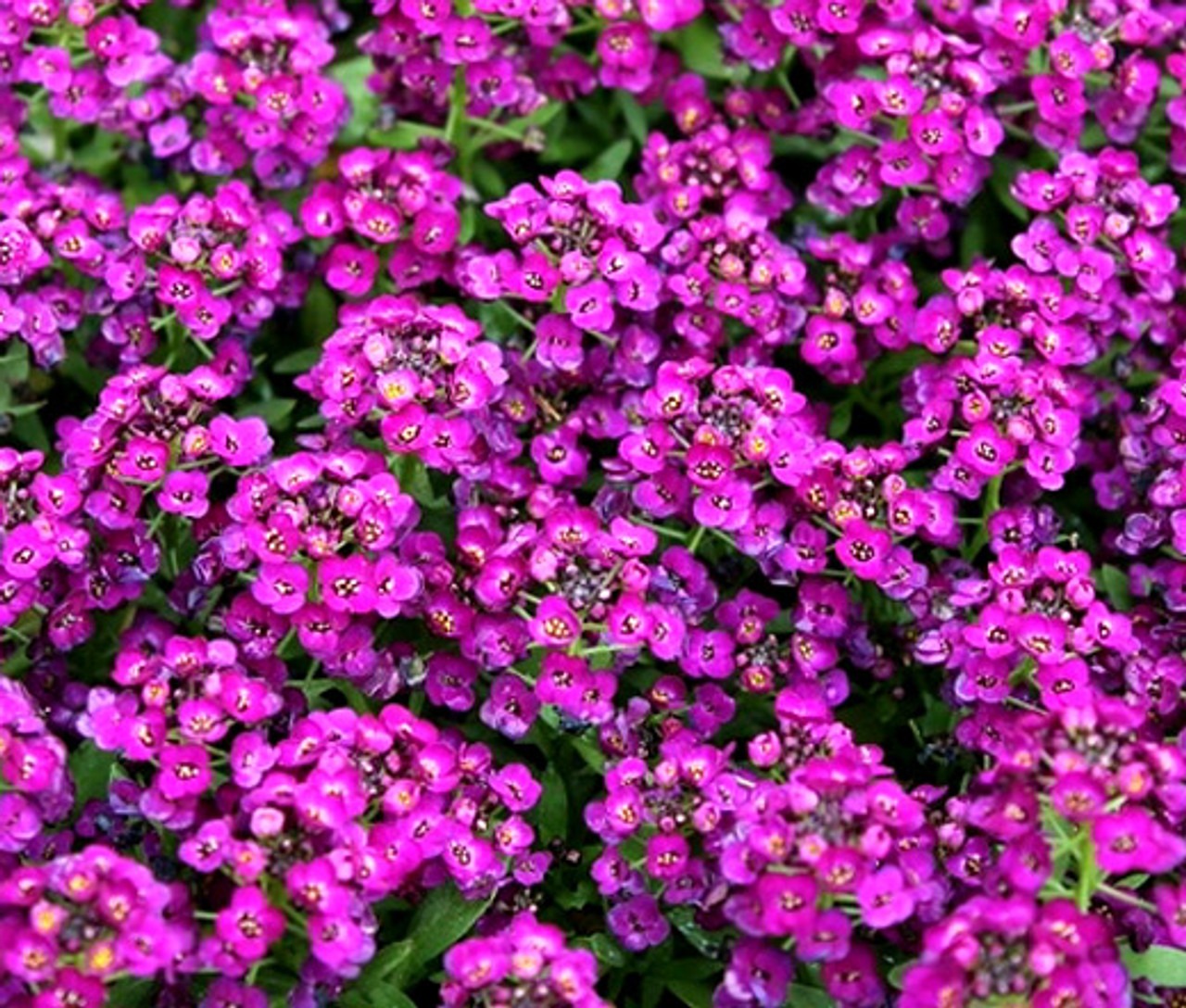
Sweet Alyssum is a popular annual known for its ability to produce a fragrant carpet of small purple flowers that bloom from spring to fall. The plant’s delicate flowers attract pollinators such as bees and butterflies, making it a great addition to pollinator gardens. Its low-growing habit and fragrant blooms also make it an excellent choice for hanging baskets, containers, or as ground cover.
This plant grows in USDA zones 5 through 9 and typically reaches a height of 4 to 6 inches. It thrives in full sun to partial shade and performs best in well-drained, slightly alkaline soil. Sweet Alyssum is often used in garden beds, edging, or between taller plants to create a pleasing contrast in texture and color.
To care for Sweet Alyssum, water it regularly but ensure the soil is not waterlogged. Deadheading the flowers will encourage new blooms and help keep the plant tidy. Sweet Alyssum can tolerate some light frost, making it a great choice for cooler climates, but it performs best in warmer temperatures. Its ability to bloom continuously and attract pollinators makes it a versatile and valuable addition to any garden.
Self-Heal (Prunella vulgaris)
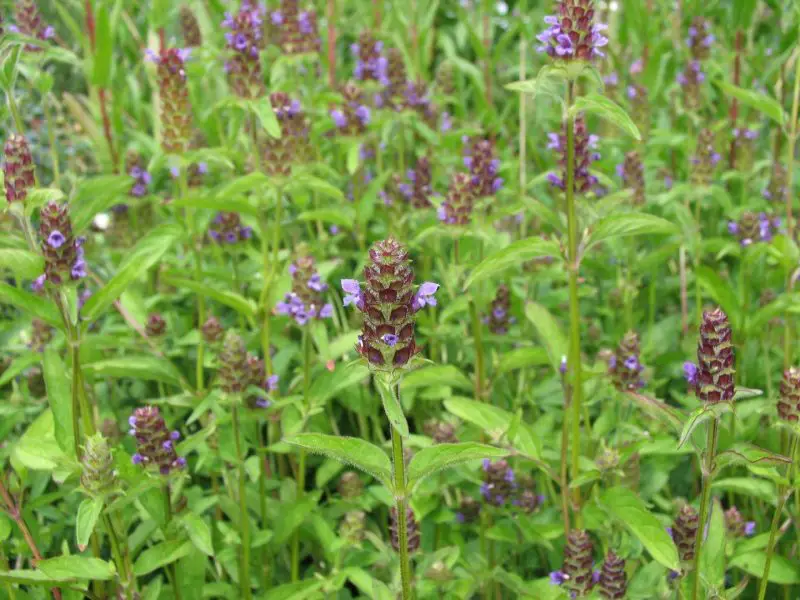
Self-Heal is a perennial herb that produces spikes of purple flowers during the summer. Known for its medicinal properties, Self-Heal is often grown in herb gardens or as a ground cover. Its spreading habit allows it to cover large areas, and it thrives in full sun to partial shade, making it suitable for a variety of garden settings.
This plant is hardy in USDA zones 4 through 9 and grows to a height of 6 to 12 inches. Self-Heal is adaptable to many soil types, though it prefers well-drained, slightly acidic soil. It is perfect for meadow-style gardens or naturalized areas where it can spread freely and create a carpet of color.
To care for Self-Heal, provide it with regular watering, especially during dry periods. Once established, it’s relatively low-maintenance and can spread naturally, though it may benefit from occasional division to prevent overcrowding. The plant attracts pollinators, making it a great choice for wildlife-friendly gardens. Its medicinal uses and ease of care also add value for gardeners seeking a plant with additional practical benefits.
Society Garlic (Tulbaghia violacea)
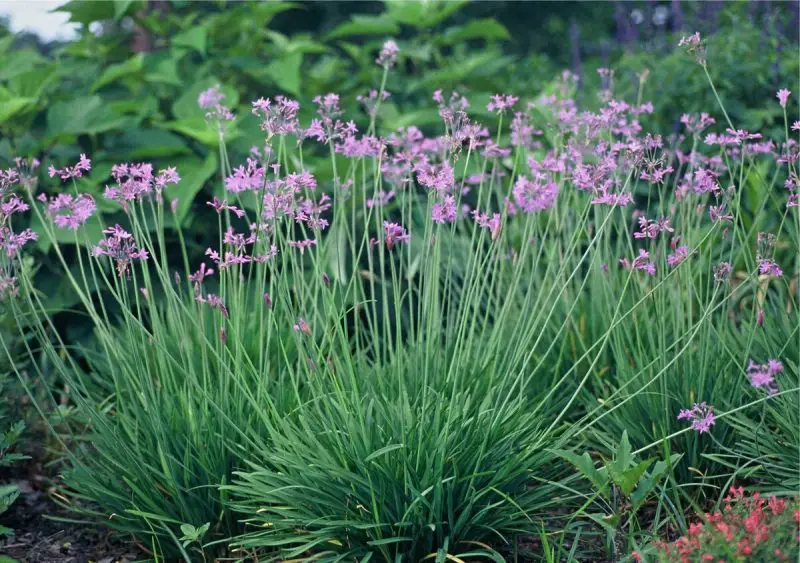
Society Garlic is a unique, fragrant perennial that features purple flowers on long stems, blooming from spring to fall. The plant’s scent, reminiscent of garlic but much milder, adds an interesting aromatic element to the garden. Society Garlic is ideal for planting in sunny, dry areas, making it a great option for hot and arid climates or xeriscaping.
This plant grows in USDA zones 7 through 10 and reaches a height of 12 to 18 inches. It thrives in full sun and well-drained soil, preferring slightly dry conditions. Its ability to tolerate drought and its resilience in full sun make it an excellent choice for low-maintenance gardens that need a burst of color and fragrance.
Caring for Society Garlic involves planting it in a sunny spot with good drainage. The plant benefits from regular watering during dry periods but can withstand long droughts once established. Deadheading spent flowers will encourage continuous blooming, and occasional trimming of the foliage will keep the plant looking tidy. Society Garlic is a perfect choice for gardeners who enjoy plants with both aesthetic and functional qualities.
Blue Star Creeper (Isotoma fluviatilis)
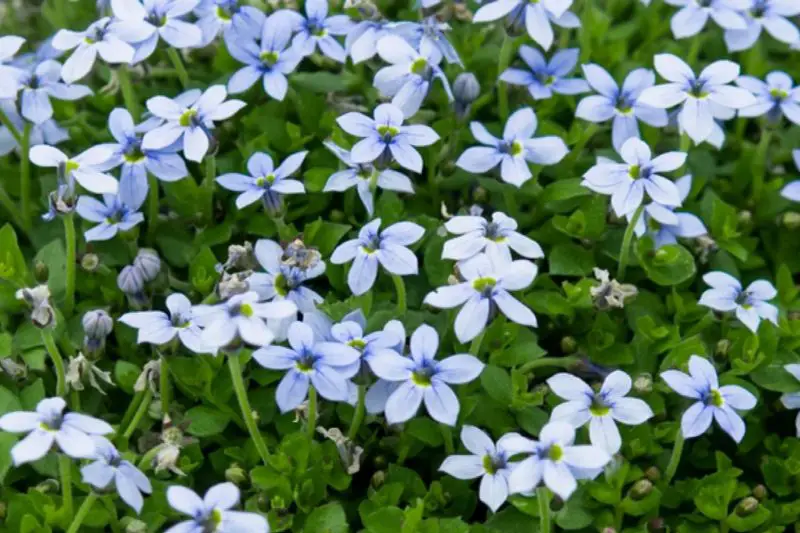
Blue Star Creeper is a low-growing perennial ground cover known for its ability to create a smooth carpet of color. Although its flowers are primarily a light blue, many varieties exhibit a subtle purple hue, making it a lovely addition to shaded or partially sunny areas. The plant is perfect for covering the ground and can tolerate light foot traffic, making it ideal for paths or walkways.
This plant is hardy in USDA zones 5 through 9 and grows to a height of just 1 to 3 inches. It thrives in both full sun and partial shade, making it a versatile ground cover for various lighting conditions. Blue Star Creeper is perfect for filling gaps between larger plants or softening the edges of garden paths.
To care for Blue Star Creeper, plant it in well-drained soil and water it regularly to maintain consistent moisture. Once established, it is drought-tolerant and requires little maintenance. Its dense mat of foliage and beautiful blooms make it an excellent choice for areas where other plants may struggle to grow. Regular trimming can help keep it in check and prevent it from becoming too invasive.
Canadian Violet (Viola canadensis)
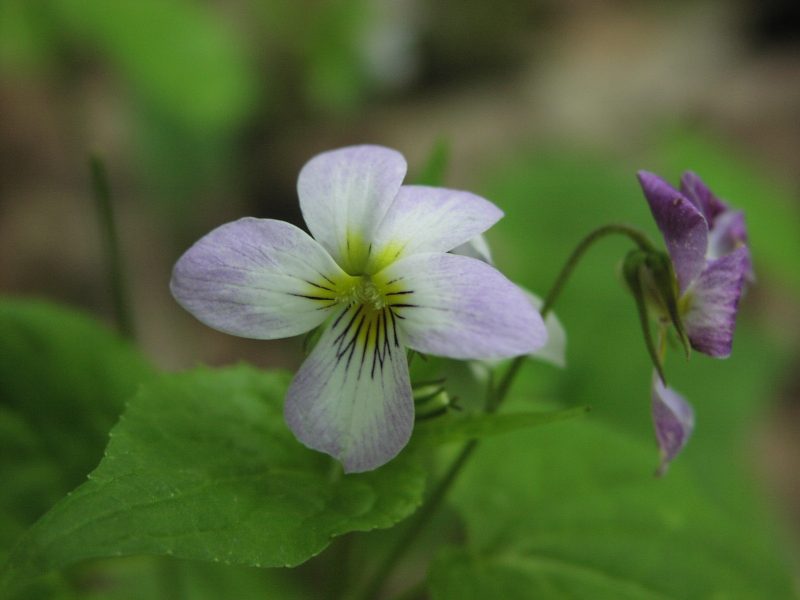
Canadian Violet is a native North American perennial that produces soft, pale purple flowers in the spring. This charming plant is perfect for shaded woodland gardens or areas with moist, well-drained soil. Canadian Violet’s delicate blooms are complemented by its heart-shaped leaves, adding to the overall appeal of shaded landscapes.
This plant grows in USDA zones 3 through 7 and typically reaches a height of 8 to 12 inches. It thrives in partial to full shade, making it an excellent choice for planting under trees or along woodland edges where other plants might struggle to thrive. The flowers add a touch of color to shaded spaces during the spring, before many other plants begin to bloom.
To care for Canadian Violet, ensure it is planted in rich, moist soil with good drainage. It benefits from regular watering, especially during dry spells, but should not be allowed to sit in waterlogged soil. Canadian Violet is relatively low-maintenance and, once established, can provide long-lasting beauty in shaded or woodland gardens. Its native status also makes it a valuable plant for attracting local wildlife.
Toadflax (Linaria purpurea)

Toadflax is an elegant, tall perennial that features spikes of vibrant purple flowers throughout the summer. These flowers, resembling snapdragons, add vertical interest to garden borders or wildflower meadows. It often grows naturally in grasslands and forest edges, where it thrives in dry, well-drained soil and full sun.
This plant grows in USDA zones 4 through 9 and reaches a height of 18 to 36 inches. Its striking flowers attract pollinators like bees and butterflies, making it a great choice for a pollinator-friendly garden. Toadflax is drought-tolerant once established, making it suitable for low-water gardens or areas with minimal rainfall.
To care for Toadflax, plant it in a location with full sun and well-drained soil. Water regularly during the growing season but allow the soil to dry out between waterings. Deadhead spent flowers to encourage continuous blooming. Toadflax can spread over time, so it may need to be controlled in smaller gardens to prevent it from becoming too invasive. Its hardy nature and vibrant blooms make it a great choice for naturalistic landscapes.
Wild Petunia (Ruellia humilis)
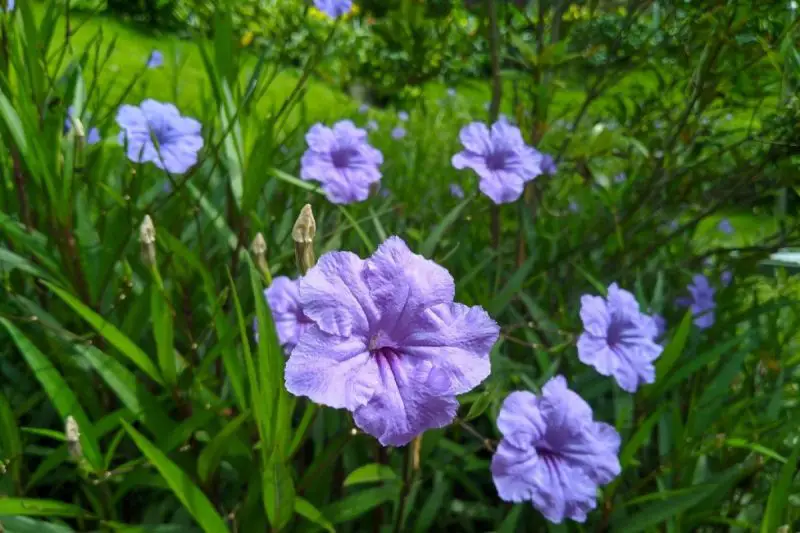
Wild Petunia is a native perennial that produces small, delicate purple flowers resembling those of hibiscus plants. It thrives in full sun to partial shade and is ideal for xeriscaping or naturalistic gardens, particularly in areas with dry conditions. This hardy plant is drought-tolerant and can handle a variety of soil types, making it a low-maintenance addition to the garden.
Growing in USDA zones 4 through 9, Wild Petunia typically reaches a height of 6 to 12 inches. It blooms profusely throughout the summer, providing a long-lasting display of color. The plant’s compact size and ability to tolerate a wide range of conditions make it a great choice for wildflower gardens, rock gardens, or as a ground cover.
To care for Wild Petunia, plant it in well-drained soil and provide regular watering during dry periods. It requires minimal maintenance and can tolerate neglect, making it an excellent choice for gardeners seeking a hardy, low-care plant. Wild Petunia’s native status makes it a valuable addition to gardens focused on supporting local wildlife and promoting biodiversity.
Creeping Speedwell (Veronica repens)
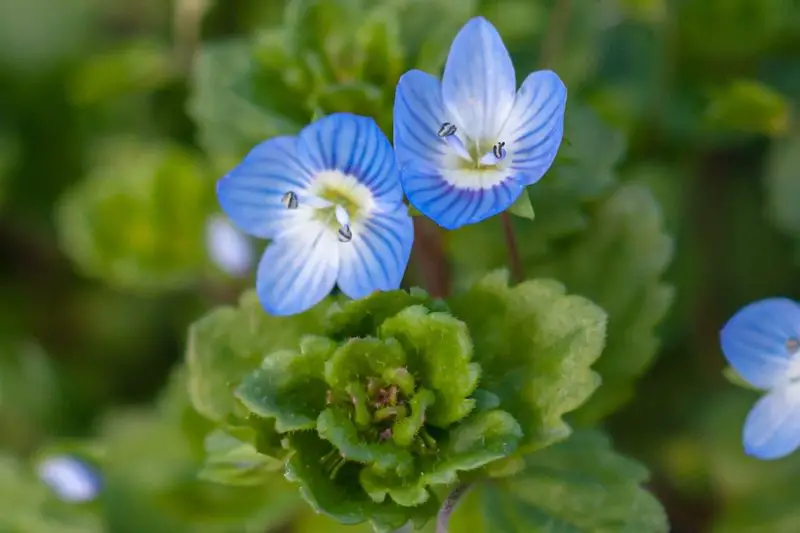
Creeping Speedwell is a low-growing perennial that forms a dense carpet of foliage and produces small, purple to bluish flowers from late spring to summer. Known for its spreading habit, this plant is perfect for ground cover, especially in areas that receive full sun or partial shade. It is one of the smallest species of Veronica, making it ideal for rock gardens, between stepping stones, or as a lawn alternative.
This plant is hardy in USDA zones 4 through 9 and typically reaches a height of 1 to 3 inches. Creeping Speedwell thrives in well-drained soil and tolerates a variety of growing conditions, though it prefers moist environments. Its dense growth habit helps suppress weeds, making it a practical choice for low-maintenance garden spaces.
To care for Creeping Speedwell, provide it with regular water, especially during dry spells. While it can tolerate some foot traffic, avoid over-watering, as it prefers evenly moist soil rather than soggy conditions. The plant’s small flowers and low growth make it an excellent ground cover or filler between other plants in the landscape.
Corsican Violet (Viola corsica)

Corsican Violet is a charming perennial that produces small, vibrant purple flowers from spring to fall. This plant is ideal for shaded or partially shaded areas, making it a perfect choice for woodland gardens or under tree canopies. Its compact size and long blooming period also make it suitable for container gardening or as an attractive ground cover.
Hardy in USDA zones 5 through 9, Corsican Violet grows to a height of 4 to 6 inches. It thrives in moist, well-drained soil and prefers partial shade, making it perfect for gardens that receive dappled sunlight. The bright purple flowers create a beautiful contrast against the dark green foliage, making it an eye-catching addition to shaded spaces.
To care for Corsican Violet, plant it in rich, moist soil and ensure it receives some protection from direct sunlight. Regular watering will help keep the plant healthy, especially during dry periods. Corsican Violet is relatively low-maintenance and can be left to naturalize in shaded areas, spreading over time to create a carpet of purple blooms.
Creeping Mazus (Mazus reptans)
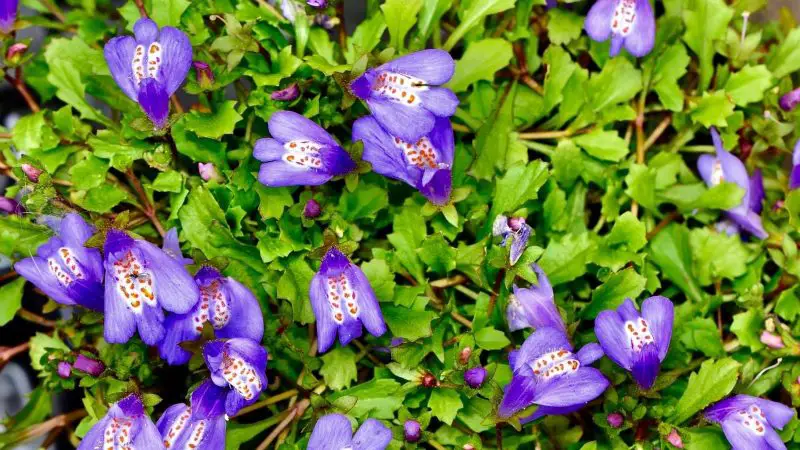
Creeping Mazus is a low-growing perennial that forms a dense mat of tiny, purple flowers with yellow markings in late spring to early summer. This fast-spreading plant is perfect for covering the ground or filling in gaps between larger plants. It is also a great option for planting along pathways or in areas with light foot traffic.
Creeping Mazus is hardy in USDA zones 5 through 8 and grows to a height of just 2 inches. It thrives in full sun to partial shade and prefers moist, well-drained soil. Its low-growing habit and spreading nature make it ideal for use as ground cover or in areas where other plants might struggle to grow.
To care for Creeping Mazus, ensure it is planted in an area with good drainage and keep the soil consistently moist during the growing season. While it is drought-tolerant once established, regular watering helps promote more vigorous growth and more frequent blooms. Creeping Mazus is a fast-growing, low-maintenance plant that provides a vibrant display of color in garden beds or along pathways.
Lilac Thyme (Thymus serpyllum ‘Coccineus’)

Lilac Thyme is a compact, low-growing thyme variety that produces small, vibrant purple-pink flowers during the summer. Its aromatic leaves and vibrant blooms make it an excellent choice for herb gardens, rock gardens, or as ground cover. This variety of thyme is also known for its ability to withstand foot traffic, making it a great option for paths or garden edges.
This plant is hardy in USDA zones 4 through 9 and grows to a height of just 2 to 3 inches. Lilac Thyme thrives in full sun and well-drained, dry soil, making it an ideal candidate for xeriscaping or drought-tolerant gardens. Its aromatic leaves are also fragrant when crushed, adding an extra sensory element to your garden.
To care for Lilac Thyme, plant it in a sunny location with good drainage and water it sparingly, as it is drought-tolerant once established. Trim back the plant after blooming to encourage new growth and maintain its tidy appearance. This hardy thyme variety is perfect for gardeners looking for a low-maintenance, fragrant ground cover that also attracts pollinators.
Purple Rock Cress (Aubrieta deltoidea)
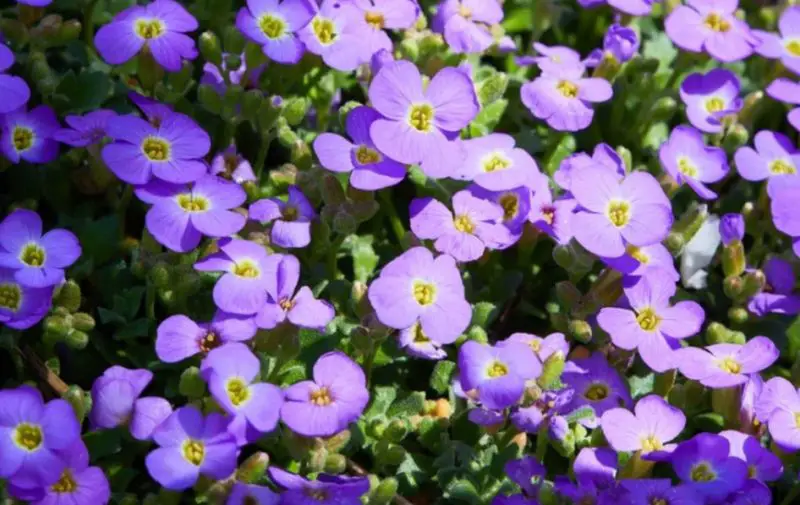
Purple Rock Cress is a vibrant perennial that is often used in rock gardens or as a border plant along walls. Known for its dense mat of deep purple flowers in early spring, this plant is perfect for brightening up any garden space. It thrives in full sun and grows to a height of 4 to 6 inches, making it a compact option for areas that need a burst of color.
Hardy in USDA zones 4 through 8, Purple Rock Cress is well-suited for areas with poor, well-drained soil and minimal water. Its ability to thrive in dry conditions makes it ideal for xeriscaping or gardens where water conservation is important. The plant’s evergreen foliage adds texture to the garden, even when it’s not in bloom.
To care for Purple Rock Cress, plant it in well-drained soil with plenty of sunlight. It requires little maintenance and can be deadheaded to encourage repeat blooming. Its ability to form dense mats of flowers makes it a great choice for ground cover, particularly in sunny spots that need colorful accents during early spring.
Vancouveria (Vancouveria hexandra)

Vancouveria is a low-growing perennial that thrives in shady garden areas, making it ideal for woodland gardens or spots under trees. This plant produces delicate white-to-purple flowers in spring, but it is best known for its beautiful, evergreen foliage, which adds year-round interest. Its ability to spread quickly makes it a great alternative to ivy in shady areas.
Growing in USDA zones 5 through 8, Vancouveria reaches a height of 12 to 18 inches and prefers moist, well-drained soil. Its ability to thrive in partial to full shade makes it perfect for areas that receive limited sunlight. Vancouveria also requires minimal care, making it a low-maintenance option for shaded landscapes.
To care for Vancouveria, plant it in rich, moist soil and provide partial to full shade. It can tolerate a variety of soil conditions but prefers a slightly acidic environment. Vancouveria’s spreading habit and attractive foliage make it a great choice for ground cover or to fill in shady areas that might otherwise be difficult to plant.
Purple Poppy Mallow (Callirhoe involucrata)
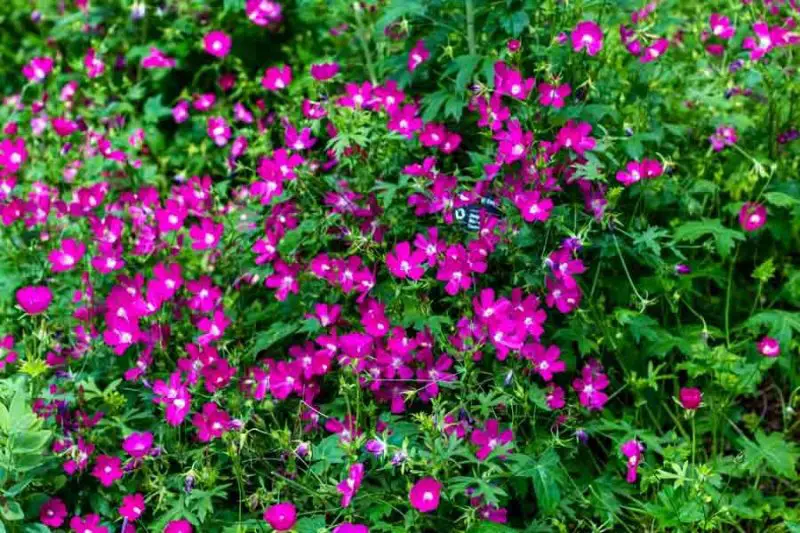
Purple Poppy Mallow is a low-growing, spreading perennial native to North America. It produces striking magenta-purple flowers that resemble poppies, blooming from late spring to early fall. This plant is particularly valued for its drought tolerance and rapid spreading habit, making it an excellent choice for naturalistic gardens or wildflower meadows.
Hardy in USDA zones 4 through 8, Purple Poppy Mallow typically grows to a height of 6 to 12 inches. It thrives in full sun and well-drained, dry soil. The plant is particularly well-suited for xeriscaping and areas where low water usage is necessary. Its spreading nature also makes it great for ground cover in areas where other plants might struggle.
To care for Purple Poppy Mallow, ensure it is planted in well-drained soil and provide it with full sun. It requires minimal watering once established and is highly tolerant of drought. Regular trimming of spent flowers will encourage continued blooming, and the plant’s fast-spreading nature may require occasional thinning to keep it under control in smaller spaces.
Creeping Zinnia (Sanvitalia procumbens ‘Purple Queen’)

Creeping Zinnia ‘Purple Queen’ is a low-growing annual that produces vibrant, small, purple flowers throughout the summer, continuing until frost. This variety of Creeping Zinnia is perfect for container gardens, hanging baskets, or as an edging plant in flower beds. Its compact size and spreading nature make it ideal for ground cover or as a colorful addition to borders.
This annual plant is best suited for USDA zones 9 through 11, though it can reseed in other areas. It grows to a height of 4 to 6 inches and thrives in full sun, where it produces a blanket of purple flowers. Creeping Zinnia is an excellent choice for adding long-lasting color to sunny spots, and its ability to reseed means that it can return the following year in some climates.
To care for Creeping Zinnia, plant it in well-drained, fertile soil with plenty of sunlight. Water it regularly, but avoid over-watering. It is particularly well-suited for hanging baskets, where it can cascade and fill the space with colorful blooms. Deadheading spent flowers will help extend its bloom time.
Trailing Lantana (Lantana montevidensis)

Trailing Lantana is a versatile and drought-tolerant perennial, known for its trailing growth habit and clusters of soft purple flowers. This plant is extremely attractive to pollinators, including butterflies, making it a great choice for pollinator-friendly gardens. Trailing Lantana thrives in full sun and can be used as a ground cover or in containers, where its cascading growth adds beauty to hanging baskets or window boxes.
Hardy in USDA zones 8 through 11, Trailing Lantana grows to a height of 12 to 18 inches but spreads much wider, often exceeding its height. Its ability to bloom from spring to fall makes it an excellent long-season performer in sunny areas. The plant’s resistance to drought and heat also makes it perfect for low-maintenance gardens.
To care for Trailing Lantana, plant it in well-drained, sandy soil and provide it with full sun. Water it deeply but infrequently, allowing the soil to dry out between waterings. While it is quite hardy, cutting back the plant after its blooming period will encourage healthier growth and help it thrive through the following seasons.
Twinspur (Diascia barberae)
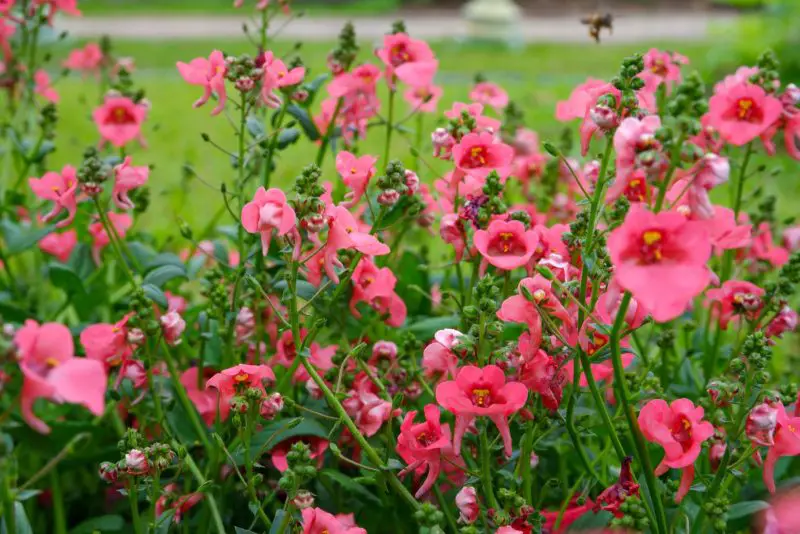
Twinspur is a charming and compact perennial that produces small, two-lipped flowers in shades of pink to purple, making it a great choice for adding color to garden borders, containers, or hanging baskets. Its trailing habit and long blooming period from spring to frost make it a popular choice for vibrant, year-round garden displays.
Hardy in USDA zones 7 through 10, Twinspur typically reaches a height of 6 to 12 inches and thrives in full sun to light shade. It grows well in well-drained soil and can tolerate heat, making it suitable for warmer climates. The plant’s unique flower shape and extended blooming season make it a standout addition to any garden.
To care for Twinspur, ensure it receives regular watering, especially during dry spells. Although it can tolerate some light shade, it will bloom best in full sun. Deadheading spent flowers regularly will encourage more blooms throughout the growing season, while the plant’s trailing growth habit makes it perfect for hanging baskets or cascading over the edges of containers.
Liverleaf (Hepatica nobilis)
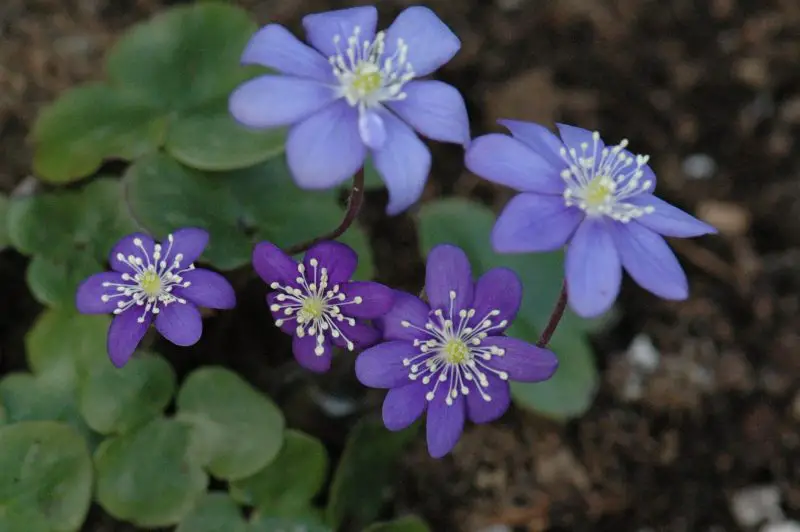
Liverleaf is a delicate and early-blooming perennial native to Europe. This plant is prized for its charming, soft purple-blue flowers that appear as one of the first signs of spring. Typically reaching a height of 4 to 6 inches, Liverleaf thrives in partial to full shade, making it an excellent choice for woodland gardens or shaded areas under trees.
Hardy in USDA zones 3 through 8, Liverleaf is well-suited for moist, well-drained soil. Its early spring blooms provide a pop of color before many other plants have started to flower. The plant’s ability to grow in low-light conditions makes it an ideal ground cover for shaded spots, creating a lovely carpet of color as the season begins.
To care for Liverleaf, plant it in a shady location with humus-rich, acidic soil. While it is relatively low-maintenance, watering it regularly to keep the soil moist is important, especially during dry spells. It is also beneficial to mulch around the base to retain moisture and protect the plant’s delicate roots.
Meadow Cranesbill (Geranium pratense)
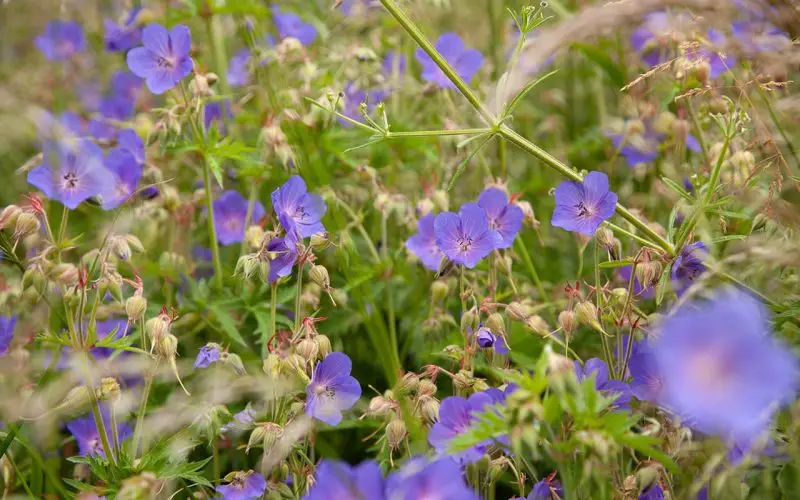
Meadow Cranesbill is a wild Geranium species known for its striking purple flowers and sprawling habit. It reaches a height of 18 to 24 inches and thrives in full sun to partial shade, making it a versatile option for a variety of garden settings. Its natural, informal growth habit makes it perfect for wildflower meadows or as an edging plant along garden borders.
Hardy in USDA zones 4 through 8, Meadow Cranesbill prefers well-drained soil and moderate moisture. Its large, vibrant purple flowers bloom during the summer months, attracting pollinators such as bees and butterflies. This plant also serves as an excellent ground cover, spreading gently over time and adding long-lasting beauty to naturalistic garden designs.
To care for Meadow Cranesbill, plant it in a sunny or partly shaded location with moist, well-drained soil. Deadhead spent flowers regularly to encourage a second round of blooms, and provide occasional watering during dry spells. While relatively low-maintenance, cutting back the plant after its blooming period can help maintain its shape and promote healthy new growth.
Wild Blue Phlox (Phlox divaricata)
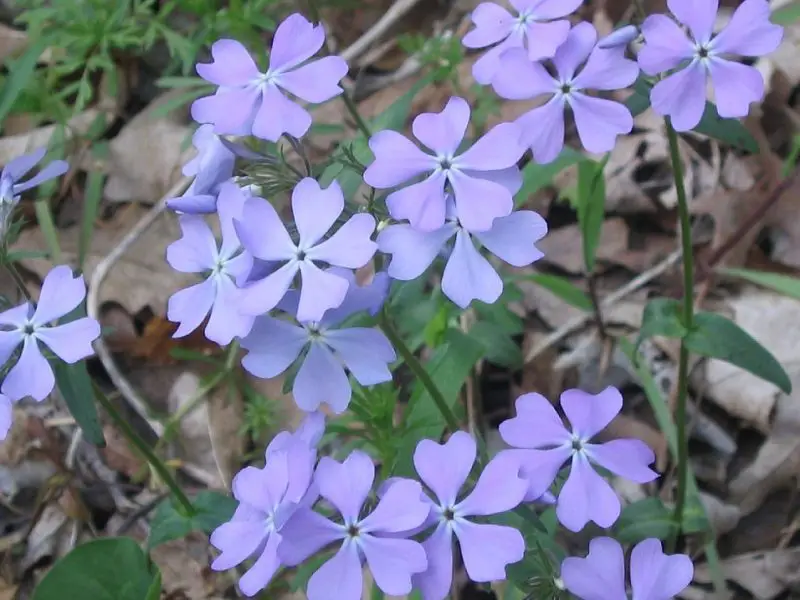
Wild Blue Phlox is a fragrant, native perennial that thrives in partial shade. It typically grows to a height of 8 to 12 inches and produces clusters of delicate, light purple-blue flowers in the spring. Known for its strong fragrance, this Phlox is ideal for woodland gardens or shady spots where other plants may struggle.
This plant is hardy in USDA zones 3 through 8 and prefers moist, well-drained soil. Wild Blue Phlox naturally grows in the wild and is well-suited for garden settings that replicate its native environment. Its showy blooms are a great addition to shaded borders or woodland areas, attracting pollinators like bees and butterflies.
To care for Wild Blue Phlox, plant it in a shady location with rich, evenly moist soil. Mulching around the base will help retain moisture and protect the plant’s delicate roots. Deadheading spent flowers encourages reblooming, while occasional division in early spring or fall will help maintain its health and vigor over time.
Groundcover Campanula (Campanula poscharskyana)
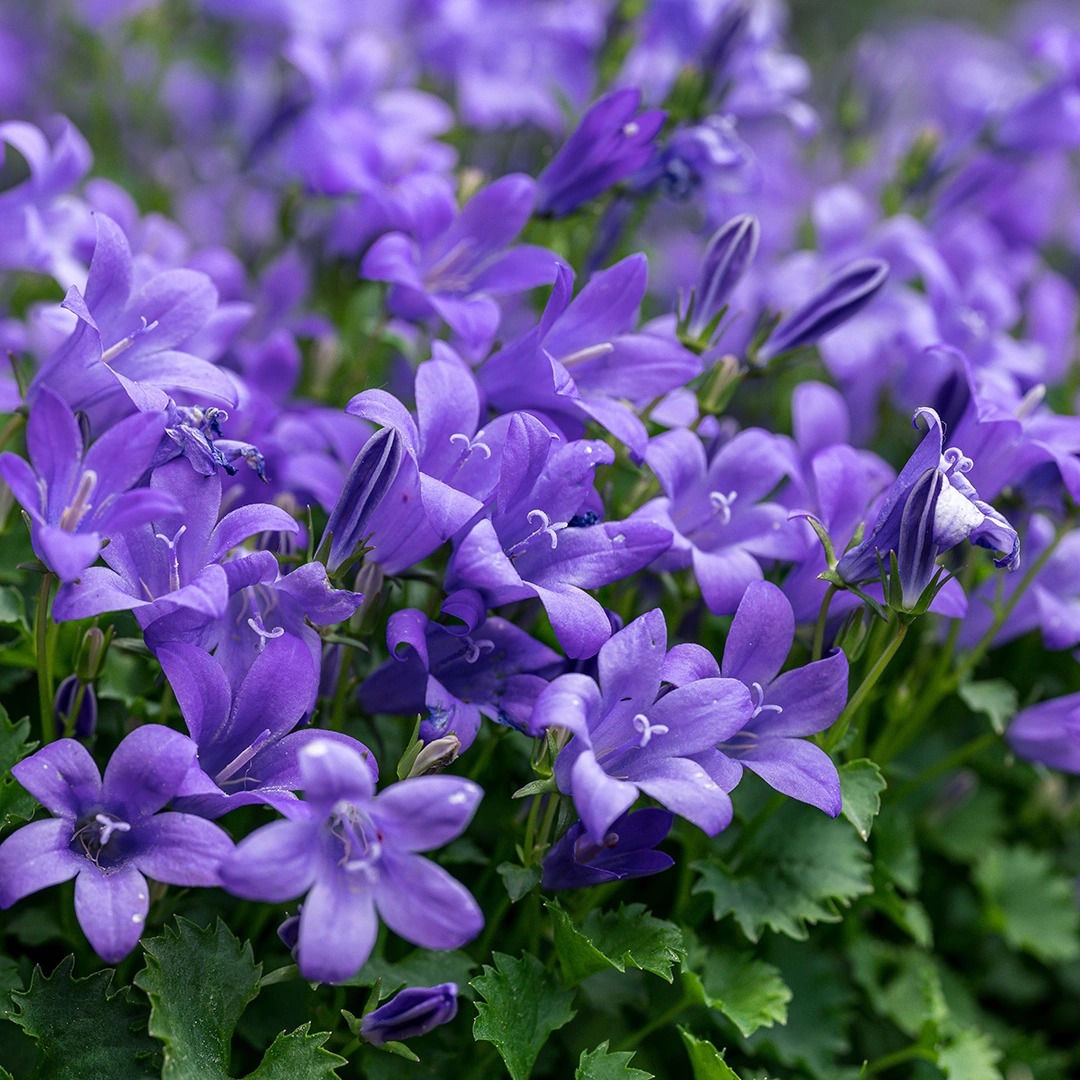
Groundcover Campanula is a low-growing perennial that spreads quickly, making it ideal for filling in gaps in garden beds or providing a vibrant carpet of color. With its star-shaped purple flowers, this plant is particularly well-suited for covering walls, rock crevices, or the edges of flower beds.
Hardy in USDA zones 3 through 8, Groundcover Campanula grows to a height of 4 to 8 inches and blooms in late spring to early summer. It prefers partial shade to full sun and well-drained soil, thriving in areas that provide good drainage. This plant’s fast-growing nature makes it an excellent choice for areas that need to be covered quickly with minimal effort.
To care for Groundcover Campanula, plant it in a location with full sun or partial shade and well-drained soil. It’s relatively low-maintenance but may require occasional trimming to keep it from overtaking other plants in the garden. Water it regularly, especially in dry conditions, but be careful not to overwater, as this can lead to root rot.
Creeping Bellflower (Campanula rapunculoides)
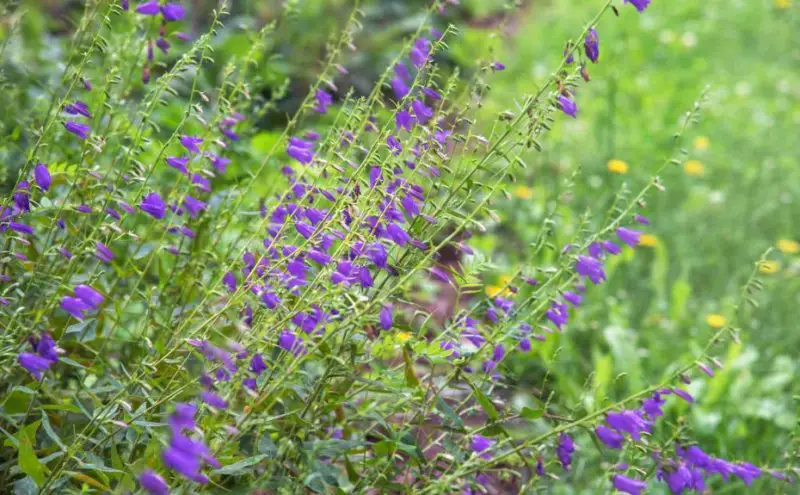
Creeping Bellflower is a fast-growing perennial that can spread quickly in garden settings, producing tubular purple flowers along its stems during the summer months. This plant can grow from 12 to 24 inches in height and is hardy in USDA zones 3 through 9. It is often used in cottage gardens, naturalized landscapes, and areas that require ground cover.
While Creeping Bellflower thrives in both full sun and partial shade, it can become invasive if not controlled, so it’s important to manage its spread in the garden. Its purple bell-shaped flowers attract pollinators, and its rapid growth makes it ideal for quickly filling in gaps or covering unattractive spaces in the garden.
To care for Creeping Bellflower, plant it in well-drained, fertile soil and provide regular watering. While it is drought-tolerant once established, it may require more frequent watering in the early stages of growth. If left unchecked, Creeping Bellflower can become invasive, so periodic thinning and careful monitoring of its spread are recommended.
Trailing Verbena (Verbena canadensis)
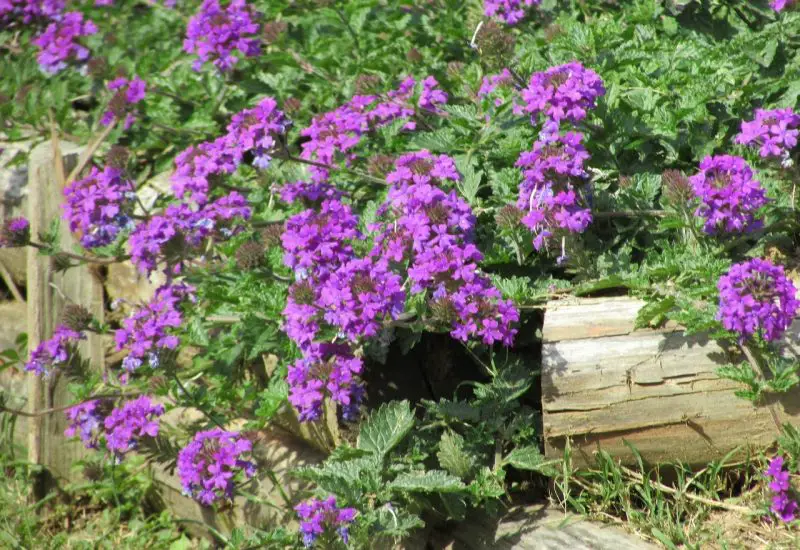
Trailing Verbena is a low-growing, spreading perennial that produces clusters of vibrant pink-purple flowers from spring through frost. This plant is highly tolerant of dry conditions, making it an excellent choice for xeriscaping or areas where water conservation is important. It also attracts butterflies, making it a valuable addition to pollinator-friendly gardens.
Hardy in USDA zones 6 through 10, Trailing Verbena grows to a height of 6 to 12 inches and spreads widely, often reaching several feet across. Its tolerance for full sun and drought conditions makes it ideal for hanging baskets, containers, or as a ground cover in sunny spots. Its long bloom period ensures that it will continue to add color to the garden for much of the year.
To care for Trailing Verbena, plant it in well-drained soil with full sun exposure. Water it deeply but infrequently, allowing the soil to dry out between waterings. To encourage continuous blooms, remove spent flowers regularly. Its ability to withstand heat and drought makes it a fantastic choice for low-maintenance gardens or areas with limited water availability.
Pasque Flower (Pulsatilla vulgaris)
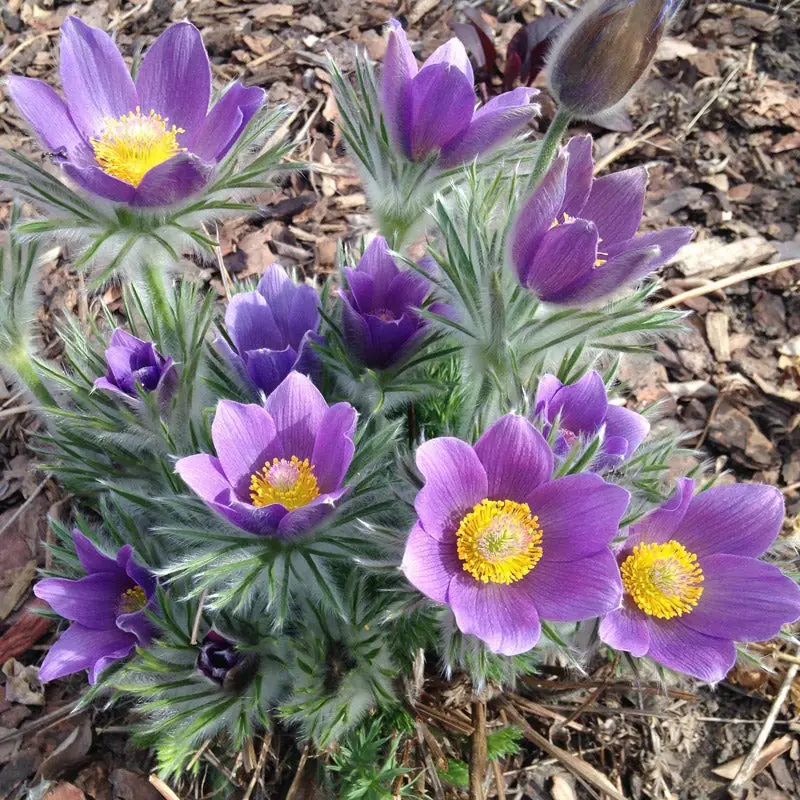
Pasque Flower is a charming perennial known for its bell-shaped, purple flowers that bloom in early spring, often one of the first to signal the arrival of the season. Growing to a height of 8 to 12 inches, this plant thrives in full sun and is perfect for rock gardens or dry, well-drained areas. Its feathery, soft foliage adds texture and interest even when the plant is not in bloom.
Hardy in USDA zones 4 through 8, Pasque Flower prefers dry, well-drained soil and a sunny location. The plant’s early spring blooms create a stunning display of purple flowers, making it a wonderful choice for gardens where early-season color is desired. After flowering, its graceful, fern-like leaves remain attractive throughout the growing season.
To care for Pasque Flower, plant it in well-drained, slightly acidic soil with full sun exposure. While it is drought-tolerant once established, regular watering during dry periods can help ensure healthy growth. After blooming, trim the spent flowers to encourage tidy growth, and be sure to protect it from overly wet conditions, which can lead to root rot.
Ajuga ‘Burgundy Glow’ (Ajuga reptans)
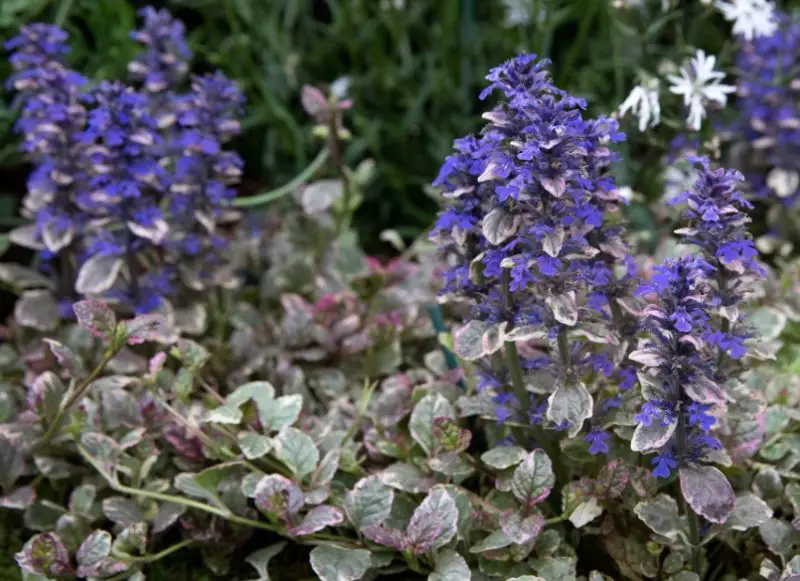
Ajuga ‘Burgundy Glow’ is a versatile groundcover plant that offers a stunning combination of colorful foliage and blue-purple flowers. Its leaves are variegated in shades of purple, silver, and pink, creating a striking contrast that lasts throughout the growing season. It grows to a height of 4 to 6 inches and thrives in a wide range of lighting conditions, from full sun to full shade.
Hardy in USDA zones 3 through 10, this Ajuga variety is perfect for planting under trees or in shaded garden beds. In spring, it produces spikes of blue-purple flowers that attract pollinators like bees. Its low-growing, spreading habit makes it ideal for covering the ground in areas where other plants may struggle to thrive.
To care for Ajuga ‘Burgundy Glow’, plant it in a location with moist, well-drained soil. It is tolerant of both sun and shade but tends to show its best colors in partial to full shade. Water it regularly to maintain consistent moisture, especially in dry conditions. This plant requires little maintenance and is an excellent choice for ground cover in shaded or woodland areas.
Alpine Betony (Stachys monieri)

Alpine Betony is a compact perennial known for its bright, spiky purple flowers that bloom during the summer months. Growing to a height of 12 to 18 inches, this plant thrives in full sun to partial shade, making it a great addition to rock gardens, borders, or naturalized areas. Its attractive, wrinkled foliage remains appealing year-round, providing texture and color in the landscape.
Hardy in USDA zones 4 through 8, Alpine Betony is tolerant of a variety of soil types but prefers well-drained soil and moderate moisture. The plant’s distinctive purple spikes of flowers attract pollinators, and its attractive foliage makes it an eye-catching feature in any garden setting. It works well as a border plant or as part of a mixed perennial garden.
To care for Alpine Betony, plant it in full sun or partial shade with well-drained soil. It is relatively low-maintenance, but regular watering during dry spells will help it thrive. Deadheading spent flowers can encourage a tidy appearance and promote additional blooming. This plant is also deer-resistant, making it an excellent choice for areas where browsing animals are a concern.
Speedwell ‘Purpleicious’ (Veronica spicata)
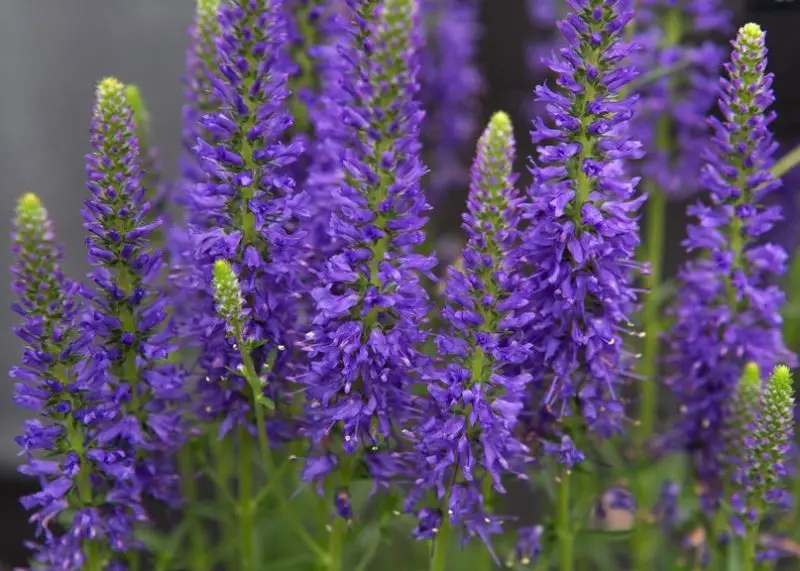
Speedwell ‘Purpleicious’ is a striking perennial that produces tall spikes of bright purple, candle-like flowers during early to mid-summer. Reaching a height of 12 to 18 inches, it is often used as a backdrop or middle layer in garden beds and borders. Its eye-catching flower spikes make it a standout plant in any garden, particularly when planted in full sun.
Hardy in USDA zones 3 through 8, Speedwell ‘Purpleicious’ thrives in well-drained soil and full sun. It is a relatively low-maintenance plant that offers long-lasting color throughout the summer, attracting pollinators like bees and butterflies. The plant’s vertical growth habit makes it an excellent addition to borders, mixed perennial gardens, or as a focal point in a sunny garden bed.
To care for Speedwell ‘Purpleicious’, plant it in well-drained, fertile soil with full sun exposure. It is drought-tolerant once established but will benefit from regular watering during hot, dry spells. Deadheading the spent flower spikes will encourage a neat appearance and may result in a second round of blooms. This plant is also resistant to deer, making it a great choice for gardens with wildlife concerns.
Hummingbird Mint (Agastache cana)
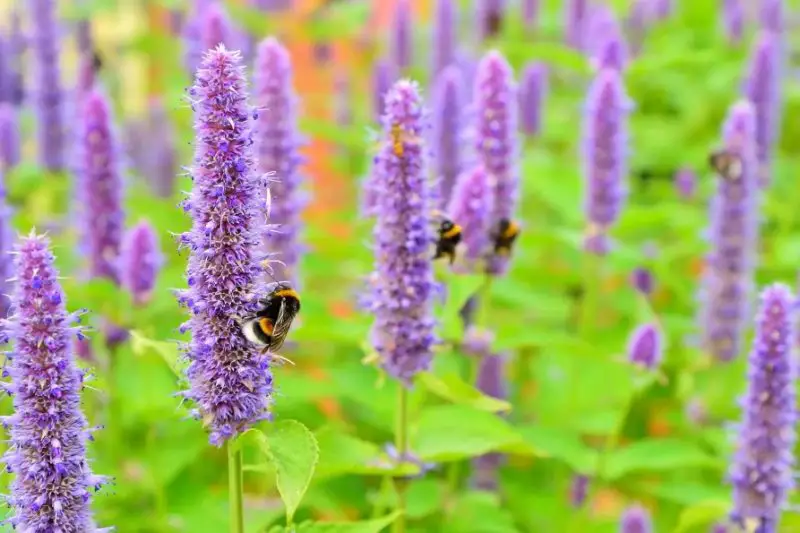
Hummingbird Mint, also known as Agastache cana, is a striking perennial that thrives in full sun and blooms from summer to fall. Reaching a height of 18 to 24 inches, it produces aromatic pinkish-purple flowers that attract a variety of pollinators, particularly bees and hummingbirds. Its upright, bushy habit makes it an excellent choice for the back of garden beds or as a border plant.
Hardy in USDA zones 5 through 10, this plant prefers well-drained soil and can tolerate a range of soil types. The strong fragrance of the flowers is not only appealing to pollinators but also adds a pleasant scent to the garden. Hummingbird Mint thrives in sunny locations and is perfect for attracting wildlife into your landscape.
To care for Hummingbird Mint, plant it in full sun and well-drained soil. It is relatively drought-tolerant once established, but regular watering during dry spells can help it thrive. Trim back spent blooms to maintain a tidy appearance and encourage new growth. This plant is ideal for pollinator gardens and naturalistic landscapes.
Spotted Deadnettle (Lamium maculatum ‘Purple Dragon’)
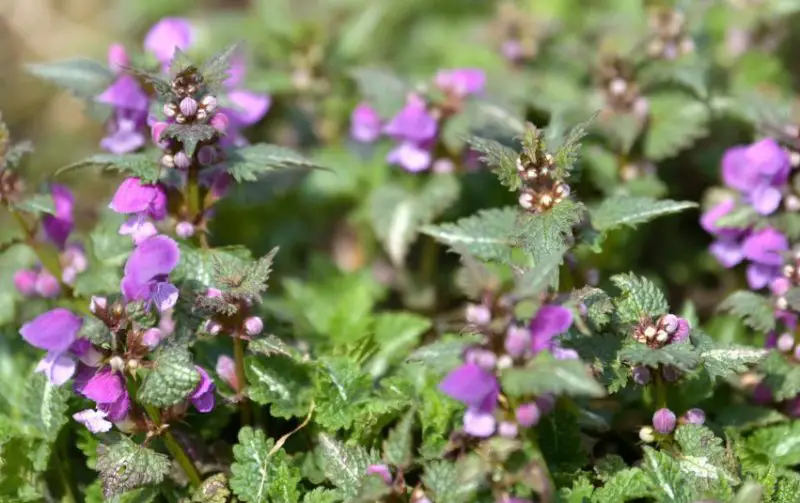
Spotted Deadnettle ‘Purple Dragon’ is a low-growing perennial that thrives in partial to full shade, making it perfect for shaded areas under trees or along the edges of woodland gardens. Growing to a height of 6 to 8 inches, it has striking silver-green leaves with dark green markings and vibrant purple flowers that bloom from spring through summer. Its spreading nature makes it an excellent groundcover plant for shaded or woodland areas.
Hardy in USDA zones 3 through 8, Spotted Deadnettle is an ideal choice for areas with moist, well-drained soil and partial to full shade. The combination of its unique foliage and bright flowers adds interest to shaded gardens, and its spreading growth habit ensures that it covers the ground efficiently. It also attracts pollinators, including bees.
To care for Spotted Deadnettle ‘Purple Dragon’, plant it in moist, well-drained soil in a shady location. It is tolerant of a range of soil types and requires little maintenance, making it an excellent choice for beginner gardeners. Regular watering will help maintain its health, especially during dry periods. Trim back spent flowers to encourage more blooms and keep the plant looking tidy.
Heather (Calluna vulgaris ‘Dark Beauty’)
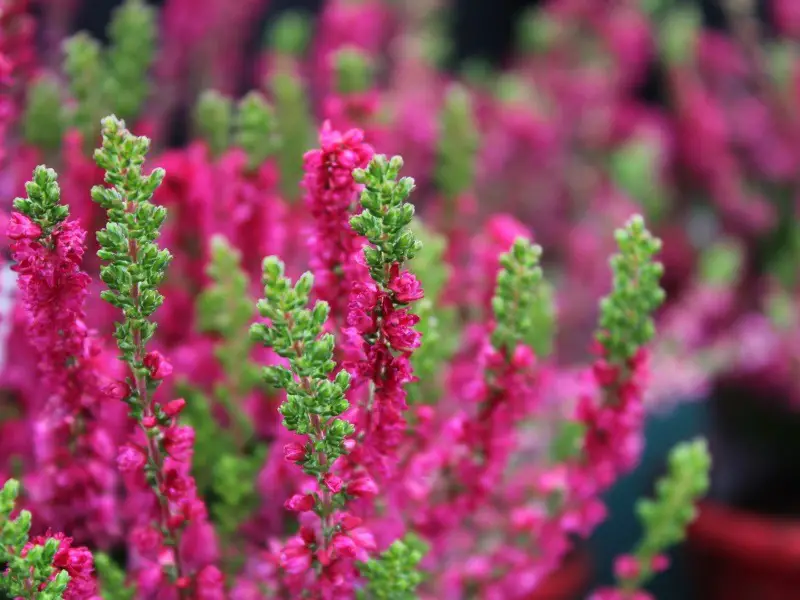
Heather ‘Dark Beauty’ is a beautiful, low-growing shrub that thrives in full sun and blooms from late summer to early fall. It reaches a height of 12 to 20 inches and features striking ruby-purple flowers that contrast beautifully with its evergreen foliage. Native to Europe, particularly the British Isles, this variety of Heather is especially hardy and can withstand colder temperatures, making it ideal for colder climates.
Hardy in USDA zones 4 through 6, Heather ‘Dark Beauty’ prefers well-drained, acidic soil and full sun. It is a popular choice for both ornamental gardens and wildflower meadows, adding rich color during late summer and fall. The plant’s ability to endure cold conditions makes it suitable for gardens in northern climates.
To care for Heather ‘Dark Beauty’, plant it in acidic, well-drained soil with full sun exposure. Regular watering is important, particularly in dry periods, but be sure to avoid waterlogging, as this can harm the plant. Prune back the plant after flowering to encourage healthy new growth. This variety is perfect for rock gardens, border plantings, or as a low-growing hedge.
Twinflower (Linnaea borealis)
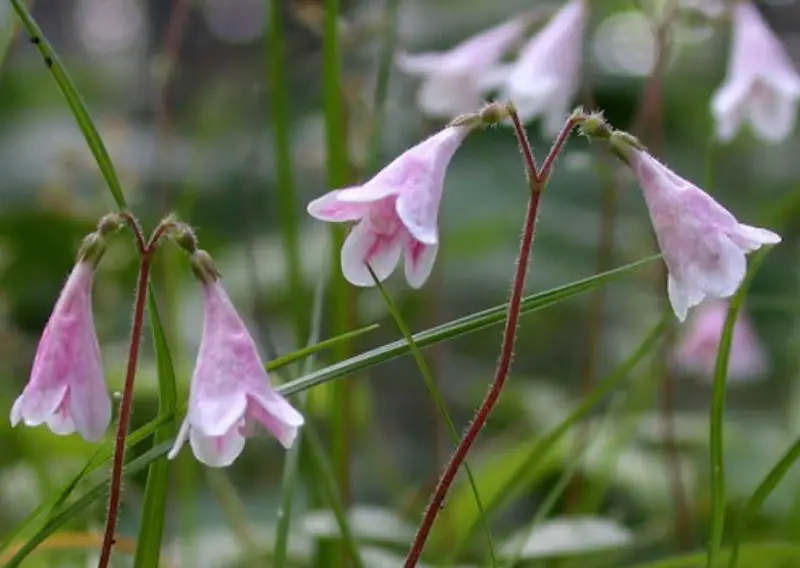
Twinflower (Linnaea borealis) is a charming, low-growing perennial native to the forests of the northern hemisphere. It typically reaches a height of 2 to 4 inches and features delicate pairs of pale purple flowers that bloom in late spring. This plant is perfect for naturalistic gardens and shaded woodland areas, where its soft, twin flowers can be appreciated in the early part of the season.
Hardy in USDA zones 3 through 6, Twinflower prefers partial shade and moist, well-drained soil. Its low-growing, spreading habit makes it ideal for groundcover in shaded gardens, particularly under coniferous trees like pines. The plant’s subtle, bell-shaped flowers and fern-like leaves add a quiet beauty to woodland gardens or naturalized landscapes.
To care for Twinflower, plant it in a shady, moist area with well-drained soil. It thrives in cool, moist conditions and benefits from regular watering. While it is low-maintenance, the plant should be kept in areas with sufficient moisture, particularly during the early spring blooming period. It’s an excellent choice for shaded gardens, rock gardens, or as ground cover in naturalistic settings.


